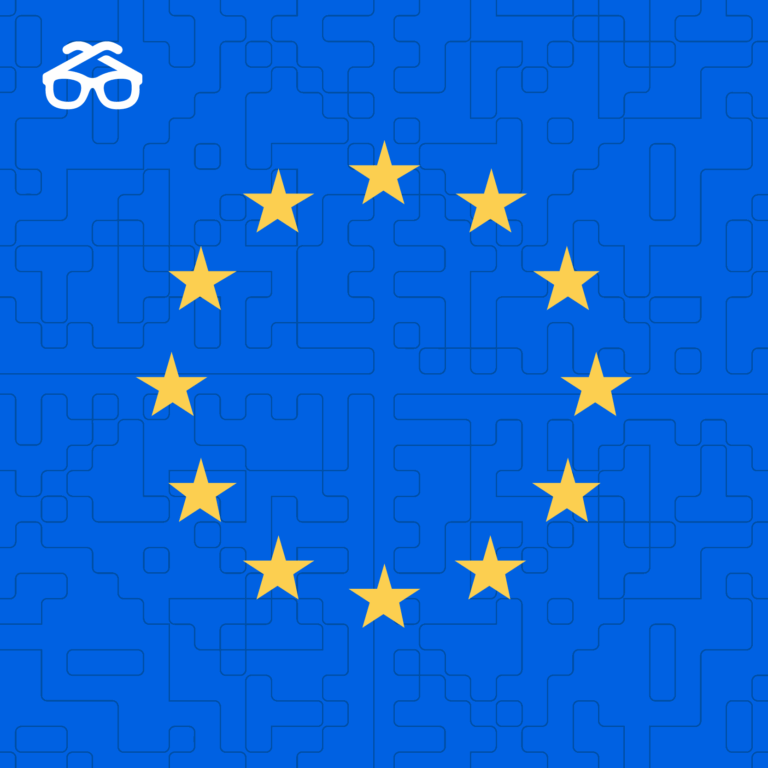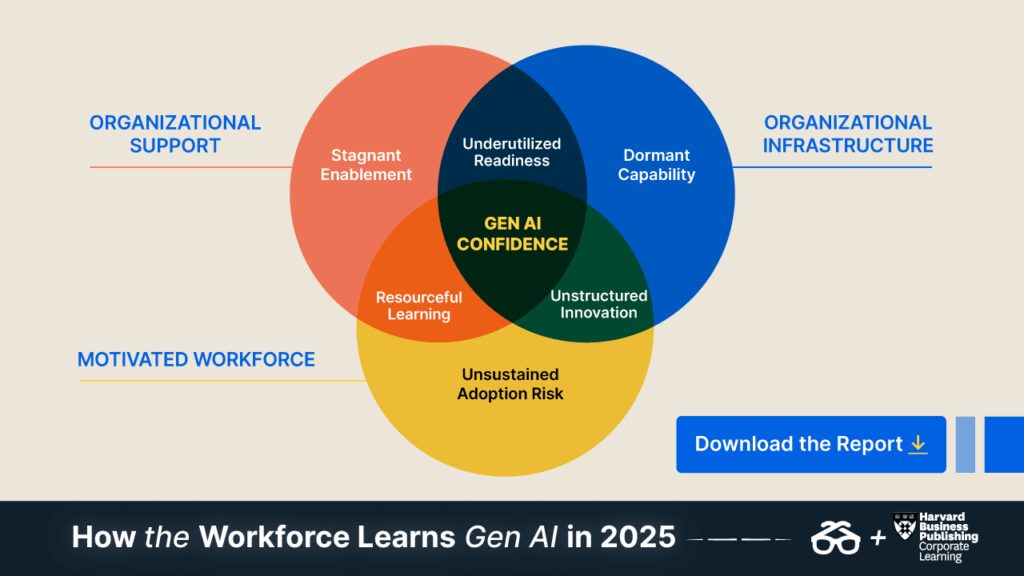
What the EU AI Act Means for HR Leaders in 2025
The EU AI Act is here—and it’s sending a clear message to enterprise leaders: AI isn’t just an innovation opportunity. It’s a responsibility and can become a potential liability.
Any organization with a significant EU presence will be concerned, and any organization using AI to screen, train, or manage talent may fall under the high-risk rules, meaning that compliance could be complex if you don’t choose the right partner or provider. But despite the challenges, there’s an opportunity— and that is to leverage regulatory pressure to increase workforce confidence and fluency in using Gen AI and develop a competitive advantage.
It’s an opportunity to enable your people to work with AI—ethically, fluently, and effectively—so your organization doesn’t just comply with regulations, but leads in the AI era. It’s a strategic inflection point for CHROs, CLOs, and CIOs to embed ethical, structured, and scalable AI learning into their organizations’ DNA.
Why the EU AI Act Changes the Game
The EU AI Act introduces sweeping rules on the development and use of AI, with some of the most stringent requirements impacting systems designed to automate workforce management.
Article 4 of the EU AI Act is clear:
« Providers and deployers of AI systems shall take measures to ensure, to the best extent possible, a sufficient level of AI literacy of their staff and other persons dealing with the operation and use of AI systems on their behalf. »
Organizations are responsible for ensuring that people who interact with AI systems are properly trained—technically, ethically, and contextually. For HR and Learning Professionals, that means rethinking how AI is introduced, adopted, and governed across your workforce.
If you’re using AI to hire, upskill, manage, or evaluate employees, you’ll also need to ensure that your AI provider has performed their due diligence and built their AI solution in a way in which your company can comply with the AI Act requirements.
Our global research with Harvard Business Publishing shows that:
- 68% of employees use Gen AI tools at least weekly, indicating widespread, decentralized adoption
- Yet 78% of employees lack the confidence to use those tools effectively
- Only 7% are fluent enough to build or customize Gen AI tools
- And 74% of executives have received no formal training in Gen AI themselves
Despite high usage, most organizations are flying blind—with employees using AI tools without the training, oversight, or infrastructure required by law. This is a serious compliance risk, but more critically, it’s a missed opportunity to turn AI adoption into measurable performance and innovation gains.
Understanding the EU AI Act
The EU AI Act is designed to regulate AI applications based on their risk levels, categorising them into different tiers: unacceptable risk, high risk, limited risk, and minimal risk. This risk-based approach ensures that the higher the risk an AI system poses, the stricter the compliance requirements it must meet. Some AI applications might be strictly illegal under the EU AI Act, while others, classified as high risk, might need to be developed in specific ways, in line with the AI Act’s requirements.
Compliance with the EU AI Act is not just about adhering to regulations; it’s about ensuring that AI systems are trustworthy and beneficial for all users. For HR, Learning & Talent Management professionals, this means:
Safety and Trust
Ensuring that AI-driven upskilling tools are safe and reliable, fostering an environment of trust between the technology and its users
Transparency
Providing clear information on how AI systems make decisions is crucial for training applications that may influence learning outcomes and assessments
Legal Security
Mitigating legal risks associated with non-compliance, which can include hefty fines and damage to reputation
The 3 Levers of a Gen AI-Fluent Workforce
Our research shows that successful AI strategies converge around three critical enablers. These are the levers that bridge the gap between legal compliance and enterprise advantage:
1. Tools & Infrastructure
You can’t build Gen AI confidence without giving people hands-on access to AI tools—and embedding them into real workflows. This includes secure, explainable systems that:
- Align with ethical standards and enterprise risk frameworks
- Provide visibility into how AI outputs are generated
- Integrate into performance, development, and decision-making systems
2. Organizational Support & Training
AI learning must be structured, strategic, and consistent. What high-performing organizations are doing:
- Deploying AI academies, certifications, and on-the-job simulations
- Offering role-specific training for AI-enabled positions like Prompt Engineers and AI Analysts
- Making Gen AI literacy mandatory for managers and decision-makers
3. A Motivated Workforce
Motivation accelerates learning. Our study shows employees who perceive a personal benefit—such as productivity or creativity—are 77x more likely to engage deeply with Gen AI. This means:
- Clear communication of AI’s value
- Use of AI for self-directed learning
- Leadership that models responsible experimentation
When these three levers are deployed together, organizations unlock a confident, capable, and compliant workforce.

From Compliance to Confidence: Building Gen AI Fluency Across the Enterprise
As Gen AI reshapes work, compliance is only the starting point. Today’s CHROs, CLOs, and CIOs face a dual mandate: ensure governance and empower their people to use AI confidently and ethically. Meeting that challenge means moving beyond policy into practice.
Here’s how leading organizations are doing it:
- Evaluate your current AI literacy levels across employees and leadership
- Embed Gen AI into learning workflows and daily routines.
- Provide hands-on practice through simulations and real-world application.
- Develop fluency at every level—from frontline to executive leadership.
- Define new roles and responsibilities to scale AI capabilities.
By building a Gen AI-fluent workforce, organizations reduce risk, accelerate innovation, and position themselves to lead—ethically and effectively.
How Degreed Supports You Getting There
Compliance is at the core of our development process at Degreed. We build our platform to comply with the AI Act by leveraging:
- AI-powered platforms that prioritize human oversight, explainability, and data protection
- Structured Gen AI learning tools via academies, coaching, and personalized pathways
- Compliance-by-design architecture and logging to ensure transparency and auditability
We help you transform regulatory pressure into a competitive advantage—by building AI literacy where it matters most: in your people.

Restons en contact 
Je souhaite m’inscrire à la newsletter mensuelle pour me tenir informé(e) des prochains événements, bénéficier d’éclairages exclusifs et recevoir l’actualité des solutions Degreed.
Nous prenons très au sérieux la protection de votre vie privée. Vous pouvez modifier vos préférences en matière d’e-mail ou vous désabonner à tout moment. Conformément à vos préférences, les informations que vous nous avez fournies seront utilisées uniquement pour vous envoyer des communications relatives à Degreed. Pour en savoir plus, consultez la Politique de confidentialité de Degreed.